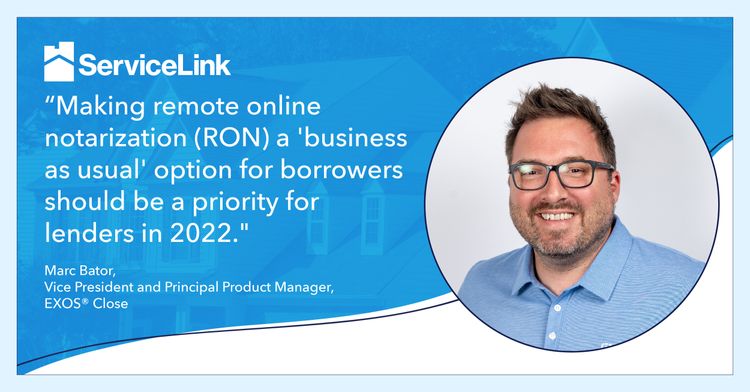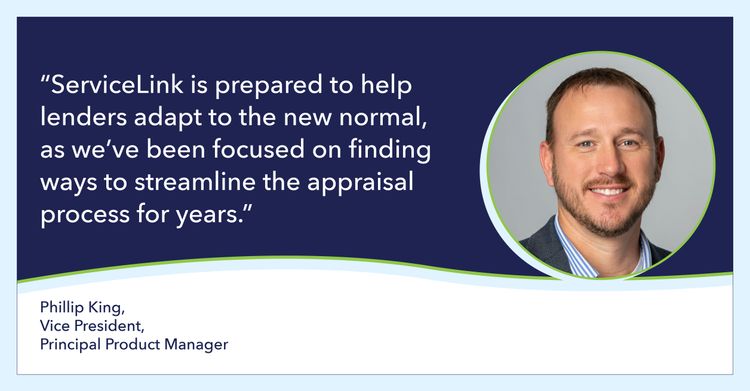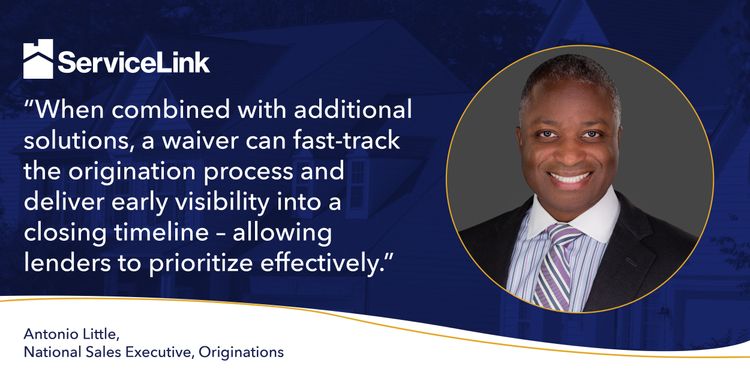Operationalizing remote online notarization has been on lenders’ to-do lists for several years now. 2022 could be the ideal time to make it happen.
Lenders learned unequivocally in 2020 and 2021 that providing borrowers with an easy, flexible and convenient mortgage process is essential to winning their business and loyalty. It’s no wonder so many lenders have stepped up their digitization efforts. Digitization has enabled them to connect with borrowers where they are, elevating the consumer experience even as they manage record volume.
Unfortunately, many lenders have stopped short of digitizing the process through closing. That’s bad news not only for borrowers, who have demonstrated their preference for electronic options over face-to-face, but also for the lenders themselves, who are missing out on important new efficiencies. eClosings, particularly those incorporating full remote online notarization, streamline closing and post-closing. RON eliminates the need for in-person meetings, frees notaries to certify more documents in less time, and results in fewer errors — inconsistencies including missed signatures, initials and dates — which can significantly reduce turnaround time.
Lenders’ delay in transitioning to RON is understandable, given the extraordinarily intense environment of the past two years. As origination volume has gone through the roof, they’ve needed all hands on deck to simply manage that volume, let alone try to implement organization-wide RON protocols. But operationalizing RON doesn’t need to be difficult, says Marc Bator, vice president and principal product manager of EXOS Close at ServiceLink.
“Making RON closings a ‘business as usual’ option for borrowers should be a priority for lenders in 2022. That doesn’t mean upending the organization; it means working with a forward-thinking settlement services partner who can provide the technology; help you navigate the needs, expectations and requirements of the various players involved; and create an unrivaled consumer experience,” Bator explains.
The Challenges of Transitioning to RON
Transitioning to RON begins with lenders’ full understanding of the landscape, including legal compliance, underwriter requirements, county restrictions and more. It’s a complex scenario but quite manageable with the right partner, Bator says. He discusses one area of note, county filing requirements, to illustrate how essential a knowledgeable partner can be.
“With some variances, all states have adopted similar protocols for RON closings. In contrast, counties can make some of their own rules. So while the state may say you’re good to go with RON, certain counties within that state may refuse to record electronically notarized documents,” he explains. “ServiceLink can instantly determine whether we can file a document electronically or need to send it in a different way. We remove the burden of navigating the varying requirements from our lender partners so they can close quickly and seamlessly.”
The other major challenge for lenders is determining how to implement RON across their entire organization with so many players involved. Even if the organization has a centralized processing unit, there are likely to be multiple vendors with multiple processes, and multiple underwriters. Creating a process that addresses the needs of every stakeholder — loan officers, underwriters, processors, closers, vendors and borrowers — can become an overwhelming task. Bator focuses on simplifying that task.
“It doesn’t need to be overcomplicated. When a lender asks us to do their closings, we simply digitize their existing signing process,” Bator shares. “They send us docs just as they would for a wet sign. We digitize them, assign an eNotary, and the signing happens online. With EXOS Close, we can even incorporate the scheduling. The borrower can select remote or in-person closing, and then self-schedule a time that’s convenient for them.”
Not all settlement service providers are equipped to provide this level of support; however, ServiceLink has a panel of hundreds of RON-ready notaries spanning a broad scope of states and working across many platforms, has executed thousands of RON closings, and has collaborated with lenders of all sizes in various stages of RON adoption. “While some lenders prefer for us to do all of their closings and signings, others may need support in standing up pilot programs. We have the people, technology and ideas to help in whatever capacity is needed on the journey to full RON,” Bator says.
Demand for Hybrid Signings Continues to Rise
Along that journey are hybrid closings, which allow borrowers to sign the majority of their documents — basic disclaimers and other non-notarized documents — prior to the wet sign or online notarization. Hybrid closings have become popular among lenders who choose to test the waters on a smaller scale before diving into full RON. They’ve become so prevalent among ServiceLink clients that the number of hybrid signings more than tripled from May 2021 to September 2021.
“We have supported many lenders through hybrid pilots,” Bator says. “We help them figure out the best pilot area, develop and implement the process, and then plan how they can most efficiently expand that process enterprise-wide and ultimately transition to full RON.”
How to Transition to RON
As origination volumes cool a bit in 2022, we can expect to see many lenders moving decisively toward RON closings. If you are among them and would like more information about the various paths available, contact ServiceLink today.
Find out more about the benefits of RON here.


